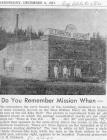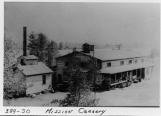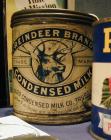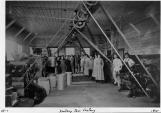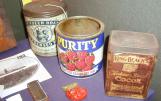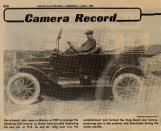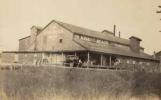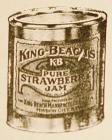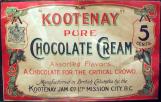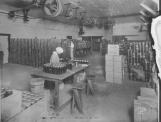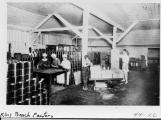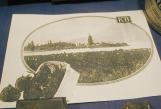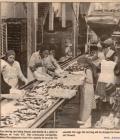

Mission Museum
Mission, British Columbia
1
WHAT THE FARMERS NEED NOW, IS JAM SWEET JAM...Mission City's active agricultural life paved the way for the development of a thriving industrial sector in the early half of the twentieth century.
3
The creameries and canneries that sprang forth were beneficial to all parties: farmers would have a market for their products as well as a safeguard against wasted surplus produce.5
The factories created jobs for the townsfolk, and the exported goods helped bolster the town economy.7
The quick growth of the dairy industry between 1900 and 1910 led to the formation of the Western Condensed Milk, Canning, Coffee and Creamery Company.The company made Rocky Mountain Condensed Milk, Standard Evaporated Cream and Hilt Edge Butter, but operations soon folded partly because there were not enough milk suppliers, and partly because the 1910 completion of the BC Electric Railway introduced competition from the south side of the river, a move that thwarted further growth in Mission City's blossoming dairy industry. From this point onwards, the processing industry would primarily focus on fruits and vegetables.
9
Most of the growers associations had a plant in which they were able to store fruit before shipping. Some of the plants had their own processing divisions, such as the United Farmers' Co-Op. The UFC built a holding plant for berry storage, and they began jam-making operations during World War One. The increased market for jam in World War One paved the way for the opening of two new canneries: the Empress Company of Vancouver, which operated a plant just east of the Mission townsite, and the Kootenay Jam Company, which took up operations in the former Truro Condensed Milk factory by the railway bridge.11
The Kootenay Jam factory was a local division of the Kootenay Company, which was headquartered in England.13
A year after the Kootenay plant opened, it was bought out jointly by Harry Beach and Mr. King.Harry Beach is seen here in his new car.
15
The King Beach Jam and Chocolate factory.17
Mr. King, a chocolatier, had proposed a partnership: the factory would produce jam in the summer and chocolates in the winter.19
Local milk was used in the manufacture of chocolate bars, as well as the popular "big puff chocolate cherry". This particular chocolate contained a generous portion of brandy in the center, which endeared it to the men folk.21
Wartime demand led to great business, and soon the newly named King Beach factory was employing fifty women at two dollars each per day.23
The twenties were a wonderfully busy time for the fruit processing plants. Local farmers were more productive than ever, bringing in plenty of raw goods for the canneries. A 1924 order from Britain for $100,000 worth of canned fruits and jams set the farmers in a frenzy of new plantings.In June 1927, the Farmers' canning plant, (formerly Ashcroft Canners and later the Canadian Canners in 1931) was at full capacity, processing 400 crates of strawberries daily. One Hundred and eighty-nine men and women worked night and day shifts at the plant.
25
In 1923, the Fruit & Mercantile opened a freezing plant, which was used to pack frozen strawberries, and this diverted some of the fruit which had originally gone to King-Beach for processing.27
Part of the King-Beach property was sold to Associated growers who kept Mr. King in charge of the operations. The rest of King-Beach was bought out by Anglo B.C. Packing Co. Anglo BC were in the salmon canning business until 1924, when Canadian Canners bought them out. Canadian Canners in turn was bought out by Aylmer, who began canning beets, corn, peas and beans with incredible speeds.29
When the Pacific Co-operative Union was formed in 1933, they opened a plant on the flats where the first St. Mary's Mission had been. The PCU installed a rapid processing assembly line along with a quick-freeze storage plant in 1947. This allowed them to process up to five tons of berries at a time and up to two hundred tons of fruit each day.31
The canning/processing factories also passed their prime in the fifties. The PCU, which ran its own freezing plant, enjoyed the benefits of a busy berry industry and produced quite prolifically until the flood of '48. The PCU finally shut down operations in 1973 and sold the plant to Westvale Frozen Foods.In later years, Mission's freezing plants processed a number of other products, like the roe herring handled by S&S Frozen Foods. S&S bought out the old Westvale plant in 1989, and has since processed fish, vegetables, and blueberries (the most recent addition to Mission's berry crops).
